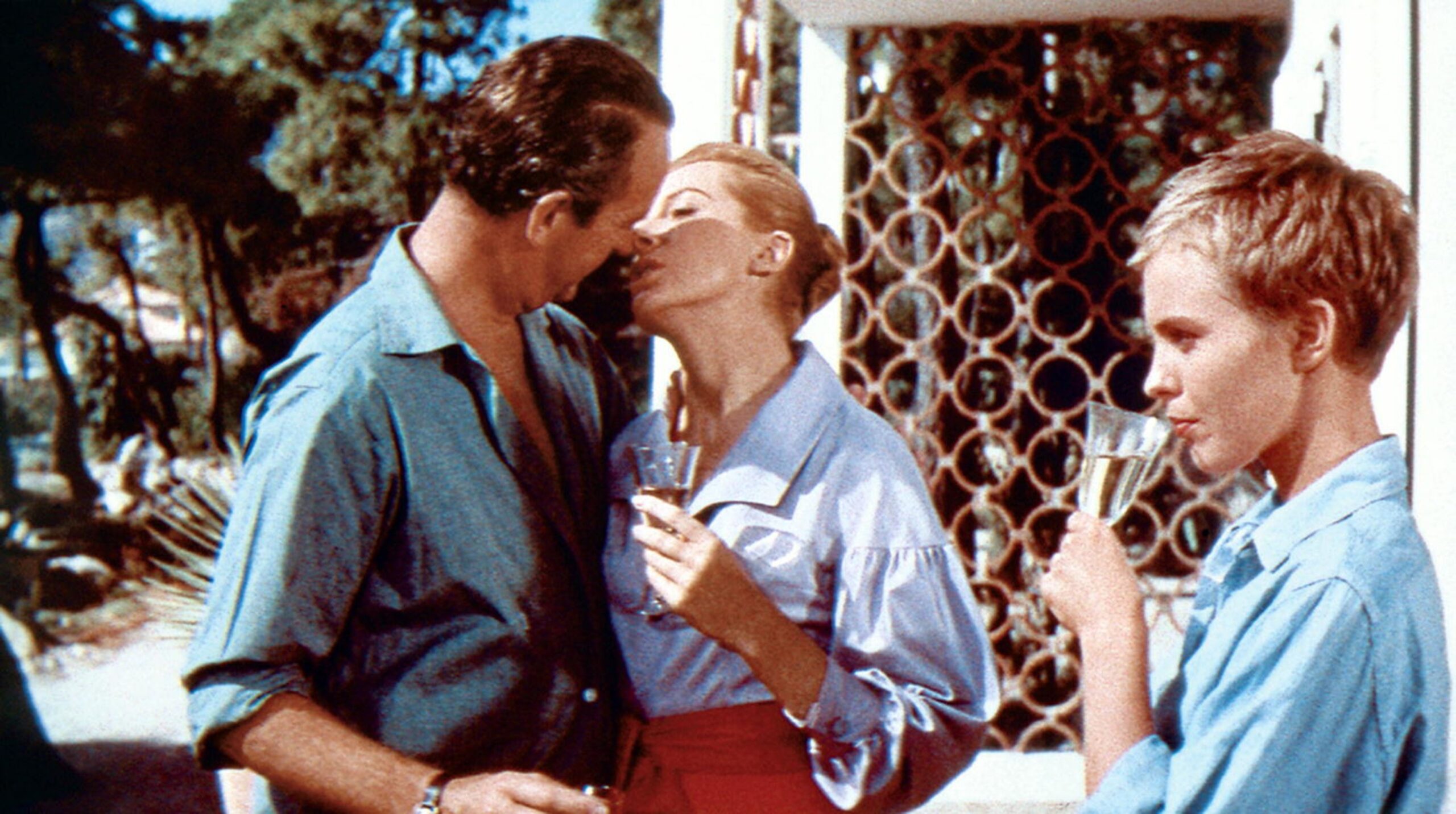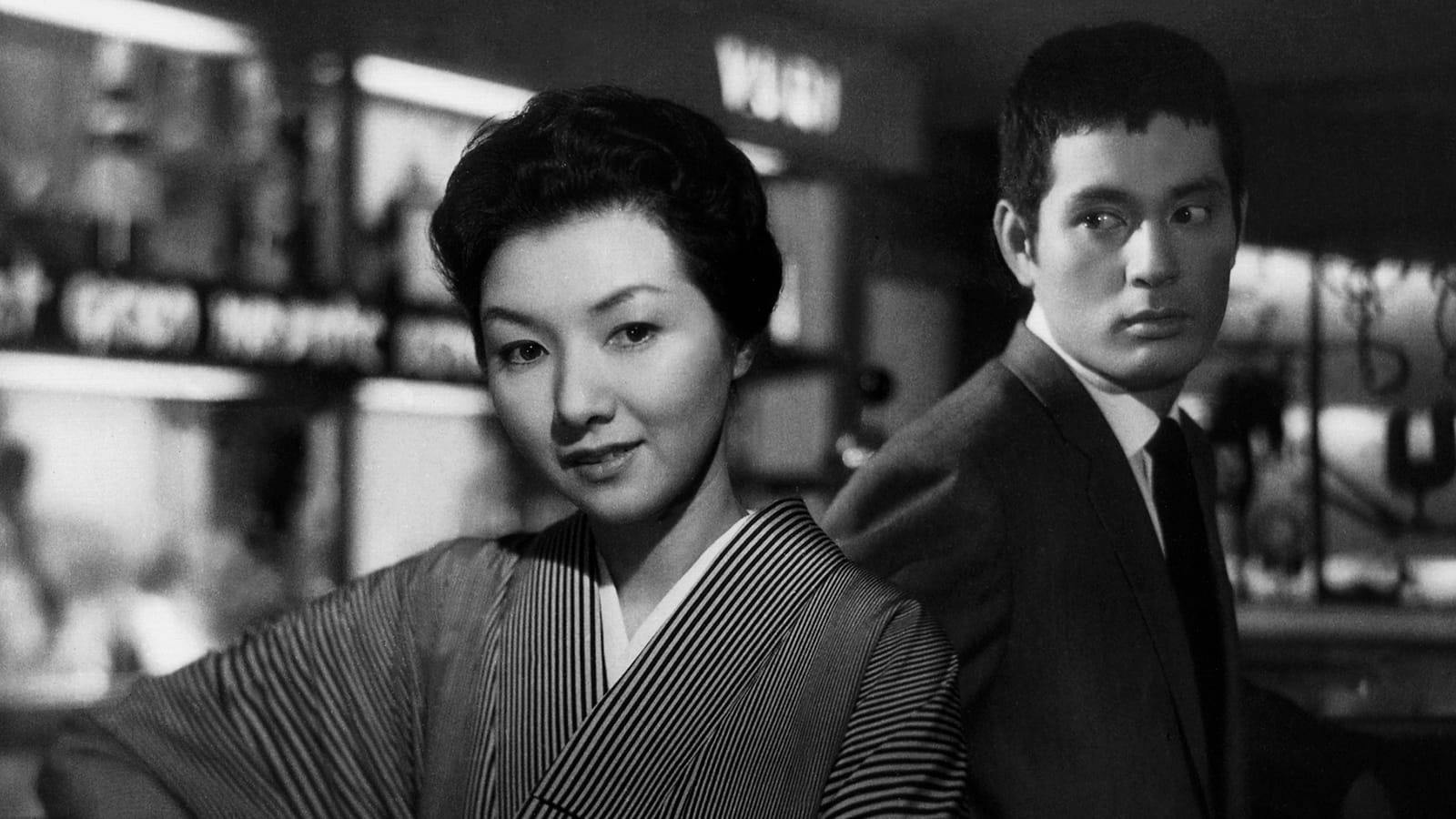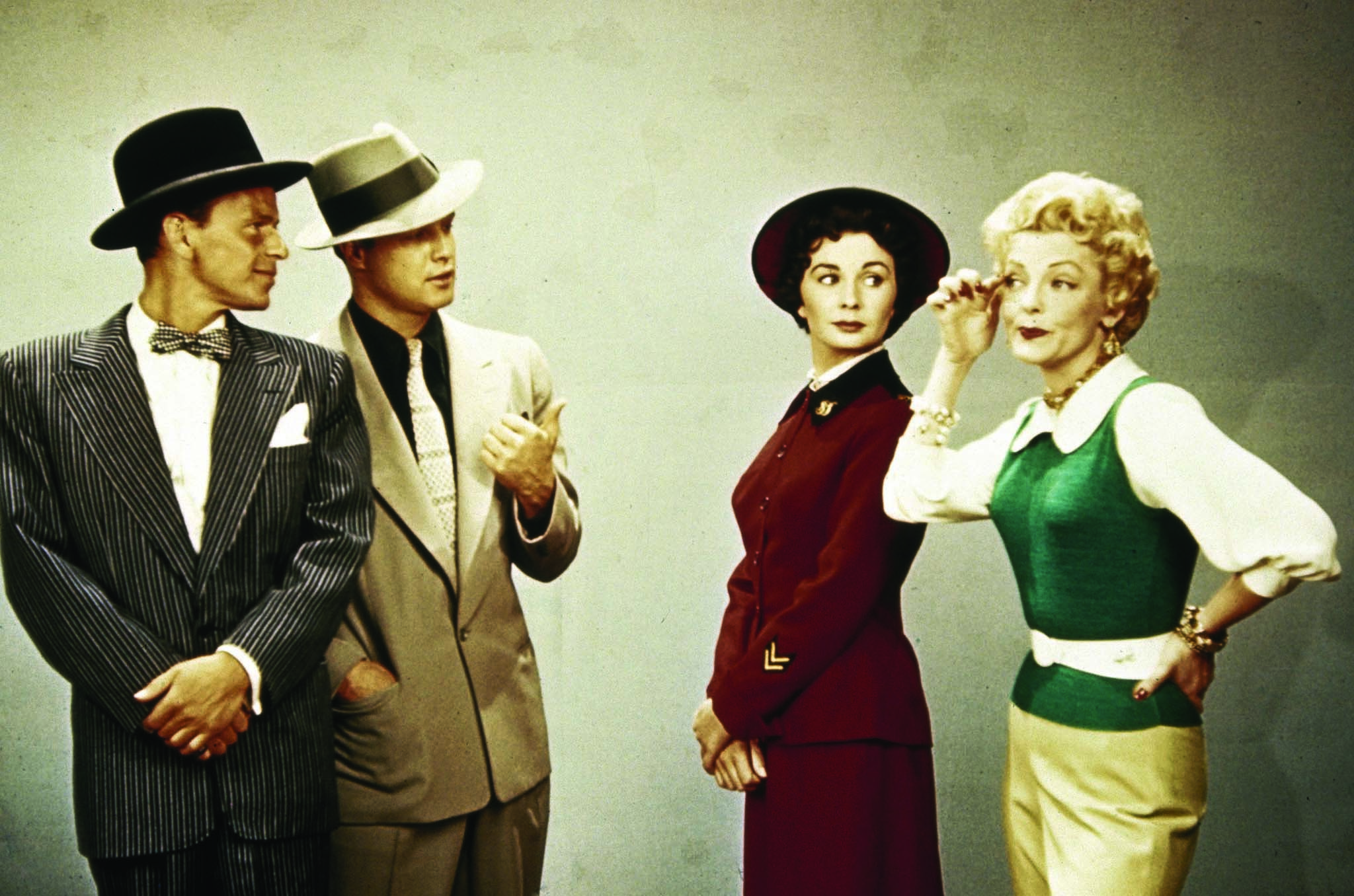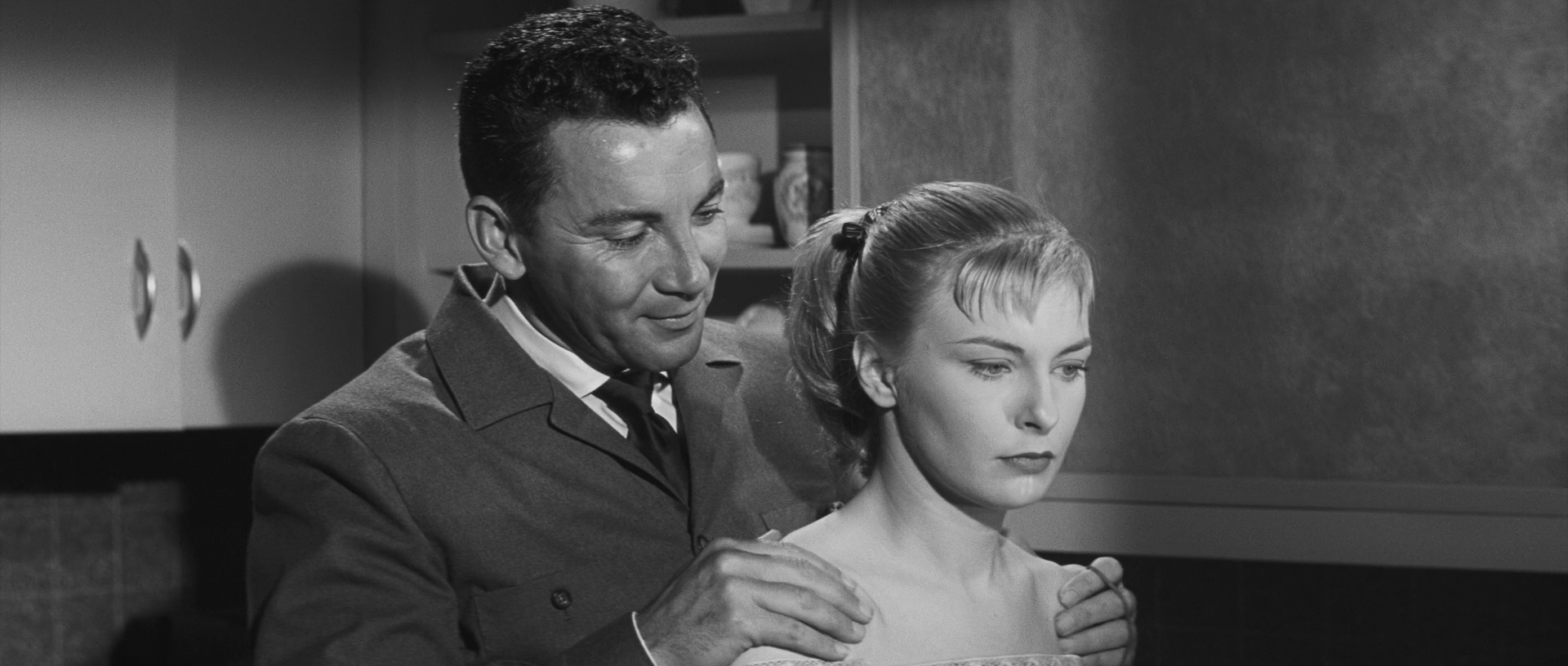In this blog we’re going to take a closer look at some of the stars of our season, Queens of the Scope Age, and the powerful performances we’ll be showcasing this September.
Deborah Kerr and Jean Seberg – Bonjour Tristesse

Kicking off our season is Bonjour Tristesse, based on Françoise Sagan’s adolescent novella of the same name. Although most associated with the iconic performance of Jean Seberg, with this film choice we wanted to spotlight the remarkable acting of Deborah Kerr. Although she gets less screen time than Seberg, Kerr was at the height of her stardom when this film was made, and she rightly received top billing.
Directed by Otto Preminger, the film centres on the rebellious teen Cecile (Seberg), on a summer vacation on the French Riviera with her wealthy playboy father Raymond (David Niven). More companions than father and daughter, their unusually close relationship and care-free hedonistic lifestyle is threatened by the arrival of family friend Anne Larson, played by Kerr. Anne brings a grown-up attitude and sense of stability to their world of childish pleasure-seeking. As Anne and Raymond grow closer, the possessive Cecile plots to separate them. The majority of the story is told in flashback, with the Riviera scenes shot in glorious Technicolour, bookended by the present day scenes in Paris that are filmed in black and white, all shot by cinematographer Georges Périnal.
The character of Anne, a fashion designer, looks the height of chic throughout and elevating the impact of Kerr’s performance are the stunning outfits she wears. A number of iconic outfits were designed by Hubert de Givenchy, working alongside costume coordinator Hope Bryce (Preminger’s wife). An actor of great range and versatility, Kerr plays Anne with considerable emotional depth and complexity, portraying a woman who is a vision of composure yet masking vulnerability.
It’s also worth commenting on Seberg’s performance. Bonjour Tristesse was Seberg’s second feature film, and her second film working with director Otto Preminger. At 17, Seberg had been selected by Preminger to play Joan of Arc in Saint Joan, based on a play by George Bernard Shaw. Seberg’s performance in Bonjour Tristesse received a harsh reception from American critics, but she found fans in the directors of the French New Wave. François Truffaut was enamoured with Seberg, writing that “when Jean Seberg is on screen you can’t look at anything else. Her every movement is graceful, each glance is precise. The shape of her head, her silhouette, her walk, everything is perfect; this kind of sex appeal hasn’t been seen on the screen.” Eric Rohmer described Bonjour Tristesse “the most beautiful film ever shot in CinemaScope ”, and Jean-Luc Godard hailed the film as one of the best films of 1958. Godard would go on to base Patricia in Breathless on Seberg’s Cecile, saying that: “The character played by Jean Seberg [in Breathless] was a continuation of her role in Bonjour Tristesse. I could have taken the last shot of Preminger’s film and started after dissolving to a title ‘Three Years Later’.”
Hideko Takamine – When A Woman Ascends the Stairs

The next film in our season is a classic Japanese melodrama shot in Tohoscope, Japan’s response to CinemaScope. An icon of Japanese cinema, Hideko Takamine gives a luminous and heartbreaking performance in When A Woman Ascends the Stairs (1960), directed by Mikio Naruse. Known for her commanding screen presence and for playing courageous, headstrong heroines, this role is no exception. Takamine worked with Naruse on 17 films over their long careers, and this is one their most acclaimed collaborations. Set in post-war Japan, the film follows Keiko, a hostess working in a bar in the Ginza district of downtown Tokyo. Working to support her family, Keiko is widowed and approaching middle-age, but still draws attention from male customers. Takamine brings stoicism and dignity to the character of Keiko, a strong-willed woman who strives for a better life. Like many of Takamine’s roles for Naruse, the character of Keiko epitomises the struggles of women in post-war Japan. Of her acting, Takamine said “What I tried to do was to be as natural as women we see in the news, but adding a touch of drama so that I would be even more real.”
Naruse was known as a director of ‘women’s cinema’, sympathetically depicting the lives and struggles of ordinary women in many of his films. However, working with Naruse could be difficult. On the director Takamine wrote, “Mr Naruse was more than merely reticent; he was a person whose refusal to talk was downright malicious. Even during the shooting of a picture, he would never say if something was good or bad, interesting or trite. He was a completely unresponsive director. I appeared in about 20 of his films, and yet there was never an instance in which he gave me any acting instructions… so it was always up to me to decide how to act on my own.”
Takamine began her acting career as a child, with her first film role when she was just five years old in the silent film Mother (1929), and these formative works led her to be dubbed ‘the Japanese Shirley Temple’. Takamine’s career would stretch into the 1970s, with her final film role in 1979, Oh, My Son!, and although filmographies record her as starring in over 170 feature films, it is believed the number is closer to 400. As well as Naruse, Takamine worked with many other luminaries of Japanese cinema, including Keisuke Kinoshita, Yasujirō Ozu, Teinosuke Kinugasa, and Masaki Kobayashi. After retiring from acting Takamine turned to writing and wrote a number of autobiographical books, a travel memoir, and even a cookbook. Along with When A Woman Ascends the Stairs, other highlights from her filmography include Twenty-Four Eyes (1954), Floating Clouds (1955), and Yearning (1964), and are all essential viewing.
Jean Simmons – Guys and Dolls

A Widescreen Weekend season would not be complete without a glorious CinemaScope musical, and Guys and Dolls (1955) sees Joseph L. Mankiewicz direct one of the most thrilling and vibrant Hollywood musicals of all time, adapted from the hit Broadway play of the same name. Set in an invitingly lurid Technicolour Manhattan, the film centres on Nathan Detroit (played by Frank Sinatra), a compulsive gambler who desperately needs to secure funds to stage one of his legendary dice games. Nathan has a scheme to raise the money, and bets fellow high-rolling gamber Sky Masterson (Marlon Brando) that he can’t woo Sister Sarah Brown, a saintly and straight-laced Salvation Army worker, played by Jean Simmons. The British star was in fact the third choice for the role (after Grace Kelly and Deborah Kerr had turned down the part), but she more than proved her worth, displaying considerable depth and range in the role, as well as a strong singing ability.
Brando and Simmons both performed their own songs in the film, and Simmons would go on to win a Golden Globe for her performance and receive a BAFTA nomination. Director Mankiewicz would later remark of Simmons that she was “the dream…a fantastically talented and enormously underestimated girl. In terms of talent, Jean Simmons is so many heads and shoulders above most of her contemporaries, one wonders why she didn’t become the great star she could have been.”
Simmons had already established an acting career in Britain (with memorable roles in Great Expectations, Black Narcissus, and Hamlet) before making the move to Hollywood in 1950. Her star rose with several noteworthy roles, playing a femme fatale in Otto Preminger’s Angel Face (1953), and a young Ruth Gordon in George Cukor’s The Actress (1953). Although she worked consistently throughout the 1950s and 60s, Hollywood did not provide her with enough roles to show off her significant acting talent. However, Guys and Dolls did give Simmons a rare opportunity to show off her comedic and singing skills. Simmons plays the role with aplomb and it’s a joy to watch Sister Brown undergo a transformation as she lets her inhibitions fall away, whilst remaining resolute in her beliefs. It’s always a pleasure to revisit this dazzling Hollywood classic, not least for one of Simmons’ greatest on screen performances.
Joanne Woodward – No Down Payment

Last up in our Queens of the Scope Age season is a film ripe for rediscovery, No Down Payment. This overlooked classic directed by Martin Ritt is a sharp critique of middle-class values and the American Dream. Set in post-war California, the film centres on four married couples living in suburban Los Angeles, in the fictional housing development of Sunrise Hills, an exclusively white community. Each with their own marital difficulties, cracks soon begin to appear in their suburban idyll, and tensions bubble to the surface. Based on the novel of the same name by John McPartland, the film deals candidly with themes of racial segregation, social conformity, sexual violence, alcoholism and fragile masculinity.
No Down Payment is Woodward’s fourth feature film role, and her second as a lead following her outstanding performance in The Three Faces of Eve (another CinemaScope classic), where she played a woman with a split personality. Before starting her career in Hollywood, Woodward had studied at the Actors Studio, famed for its teaching of method acting, and honed her craft working in television and on Broadway.
In No Down Payment, Woodward gives an electric, scene-stealing performance as Leola Boone. Married to Troy, a brooding war veteran who aspires to become the chief of police, Leola is frustrated with her homelife and longs to be a mother. Woodward incorporated moments of improvisation into her performance and would begin improvising into a scene before the cameras had started rolling, a practice that fascinated the crew. Woodward recalls “It was like starting a scene off-stage and coming in with something. Of course, they [Hollywood people] were not accustomed to that at all.” The use of improvisation adds considerable naturalism and dynamic range to Woodward’s performance. Director Ritt said of Woodward “What she has as a player and a person, is a sort of dead honesty. She’s a star. In the old days all you had to have was sex appeal; now a star has to work hard. It’s not easy.”
Woodward is also known for her many collaborations with husband Paul Newman. Married for over 50 years, during the course of their relationship they collaborated on 16 films together, including the CinemaScope pictures The Long, Hot Summer (1958), Rally ‘Round the Flag, Boys! (1958), and From the Terrace (1960). Their relationship and intertwined careers were explored in a recent HBO documentary series made by Ethan Hawke, The Last Movie Stars, and is highly recommended viewing.